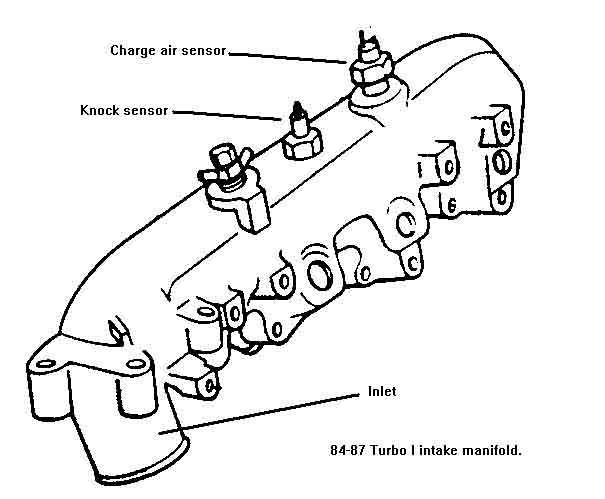
(click for larger image)
Turbo
Intake Manifolds & Throttle Bodies
1984-1987 2.2 Turbo I
According to airflow studies by LRE the 84-87 'log' manifold is very restrictive. After 12 psi, boost starts backing up or "stack" in the intake manifold.
In short, you can run 20 pounds of boost with an early intake but the same motor with a later model intake will make more power at the same boost level.
This I can believe: my buddy intercooled his 85 600 by cutting the 90 degree elbow off his intake and welding a straight section in its place. Using this redirected intake he was able to hook up an intercooler. Yet with a higher boost reading than my car (which had no intercooler), both cars ran damn near identical times.
1986-1987 2 piece Turbo II
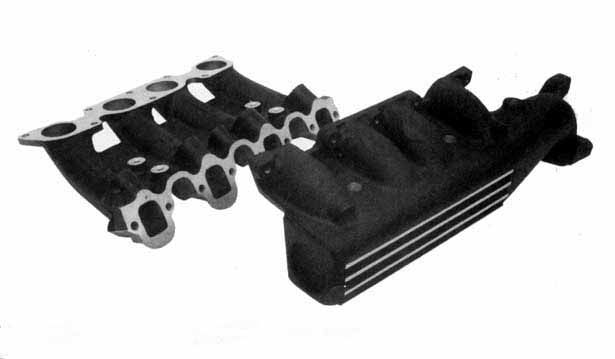
(click
for larger image)
The fuel rail for the 2-piece intake can
no longer be purchased from Mopar- It's NS1. (No longer serviced)
1988-1993 1 piece Turbo I/II
The 87 intake
and 89 intake flow the same (as per LRE airflow studies) I prefer
the 1 piece myself; it's a tad easier to work around & I have a 2.2
that is making 300 hp+ with one, flows more then enough air for me.
A word on modified 86-87 Turbo II intakes...
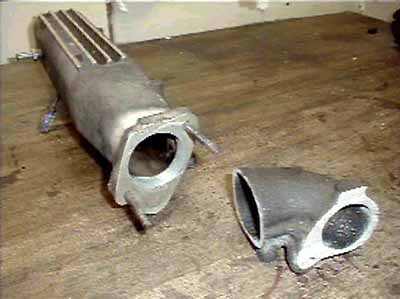
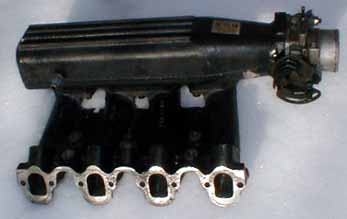
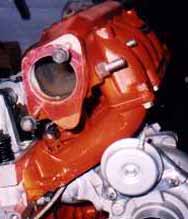
Several people have come up with the idea of removing the elbow on the top part of the two piece intake and welding the throttle body flange directly to the intake top. In almost all cases no performance gains were noted and in one case it seems to have altered the airflow coming into engine consistently leaning out and damaging cylinder number one on several occasions.
I do not recommend
this modification.
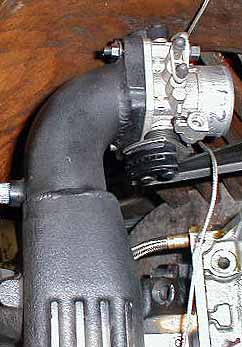
Forward
Motion does sell an intake top for the 2 piece with a "smooth flow"
elbow in place of the factory 90 degree. I didn't gain any extra power when I
tried one however, YMMV.
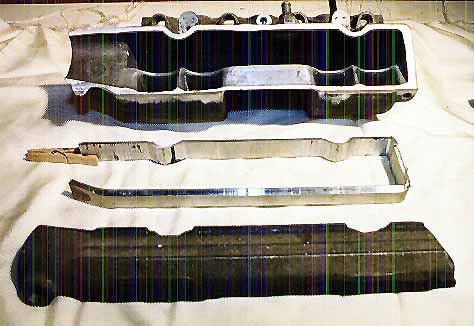
Mike Marra had a interesting idea- He sawed the top off a 1-piece intake to try his hand at a little porting and noticed that the runners were close to the roof of the intake. So he had dad whip up a spacer and then they welded the whole she-bang back together. Does it work? Who knows... But it does show you that people are a thinking out there...
Intake Porting-
I honestly don't think there is any power to be made porting your intake manifold runners if your still handicapped by a stock or near stock flowing intercooler & stock exhaust turbine wheel.
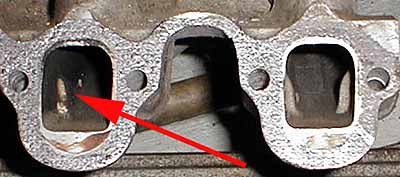
Still the question always comes up "should I remove the bumps in the runners down by the injectors", These are areas cast into the manifold to reinforce it due to clearence issues during engine assembly. It can be done but it's best to weld the area on the backside of the intake up and use allen head bolts when installing the intake.
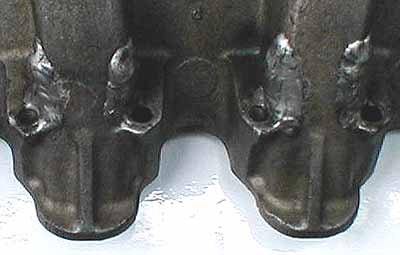
If you don't reinforce
this area you run a very good risk of intake cracking.
On port matching the 2 piece
intake halves-
DO NOT OPEN THE MATING RUNNER HOLES (where the upper and lower bolt
together) TO THE GASKET!!!!! When this is done a "bulb" or aneurysm is generated in the runner. This can cancel the
tuning process of that effective area. This will effectively make the runner appear
shorter. Also the short side turn will have a high turbulent area and flow will suffer.
As always a big thanks to 5-digits for pointing this out...
Throttle Bodies
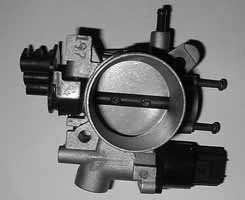
One trick for a few extra (4-6) hp is a larger throttle body. LRE and Forward Motion have oversize ones for the 84-87 Turbo I log intakes. (46mm vs 42mm)
A 52mm throttle body is a bolt on for the 87 and up TIIs; it can be found on 87-88 3.0 V6 engines and 3.3 V6's (vs the stock 46mm).
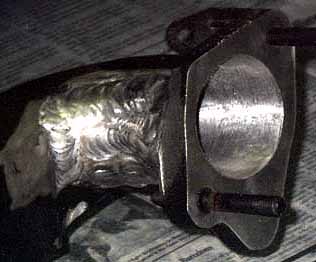
(Looks like Jeff got a little carried away on his porting here..)
Just have to
swap over the throttle bracket and cable arm, and port the intake mouth
out to match the throttle
body. Even LARGER ones (56mm & 60mm) can be purchased from LRE, FM,
and TAFT.
A reader sends this in...
Also, when the switch was made to the larger 52 mm throttle body, fuel economy was observed to drop noticeably, without any noticeable gains in power.
I agree.
The 52 mm throttle
body is the largest T.B. I would install on a 2.2/2.5 engine, even then
you will lose gas mileage around town due to loss of port velocity caused
by the larger opening. I'd also point out the Tom "Gus" Mahon runs
both his 2.5 engines with the 46mm TB & in his testing has found no
HP loss by doing so. Now normally aspirated engines tend to pick
up some usable HP from this mod with the same pitfalls. Turbo cars are
a horse of a different color however and benefit far more with mods on
the exhaust side of the motor.